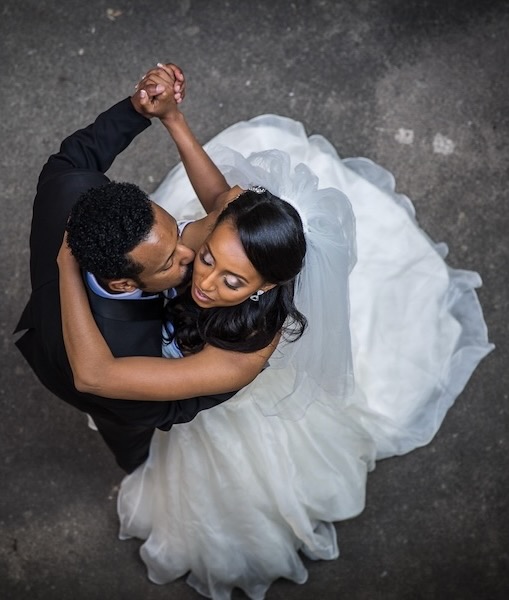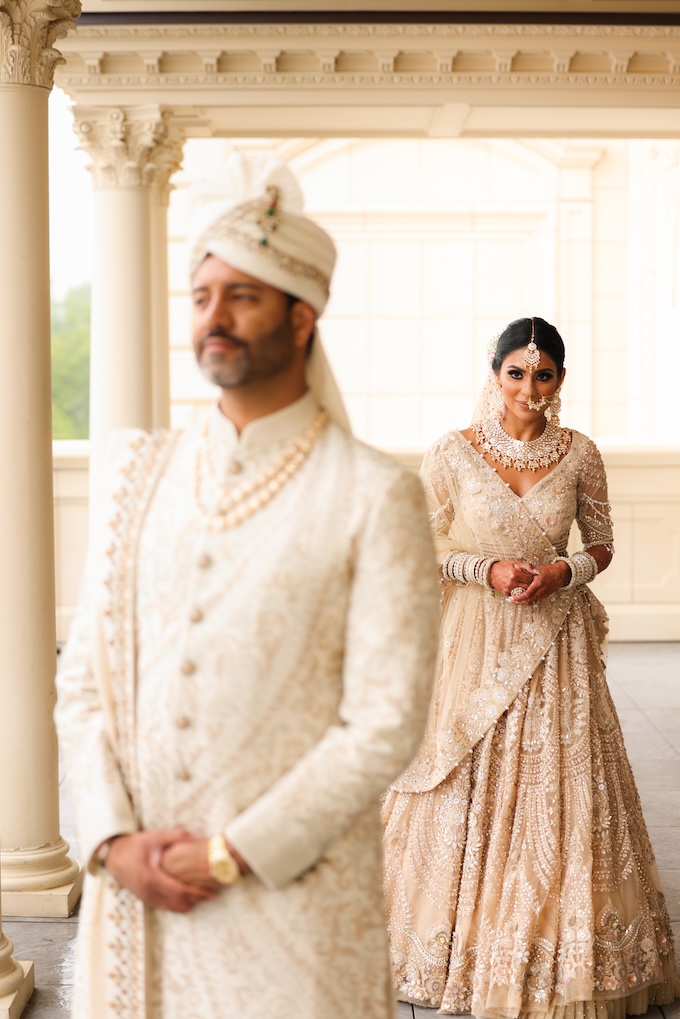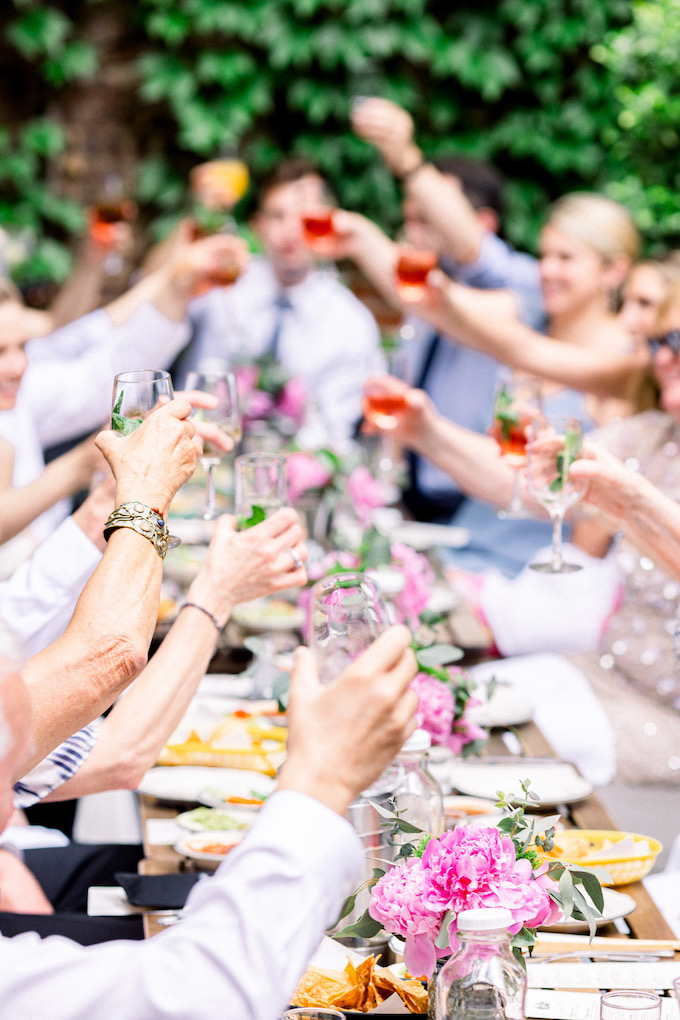Bill McCullough’s Technicolor Weddings
July 8, 2013
 “Chicago” © Bill McCullough
“Chicago” © Bill McCullough
“I don’t consider myself a wedding photographer. I’m just a photographer who happens to shoot weddings for a living,” says Austin-based Bill McCullough by way of introduction.
It’s an oft-repeated refrain amongst wedding photographers but when McCullough says it, there is a certain sincerity that is hard to deny. A self-taught photographer by way of musician, McCullough has a tendency to relate everything in photography to music. He speaks of visual harmony, dynamics, choral arrangements, and the way that one shot leads to the next, like notes on a scale. Indeed, he speaks in a low, slow basso, like a steady bass line, and, when he meanders into tangents (as he is prone to do), he sounds like a soloist lost in a riff.
McCullough shoots almost exclusively weddings, for a range of adventurous couples looking for his singular, roving photographic eye. You won’t see fashion portraits of a retouched bride and groom in his portfolio, nor will you see the photojournalistic style that has trended in wedding photography for the last several years. Instead, his work leans towards the improvisational approach of street photography, seeking to cut through the conventional wedding narrative to find the surprising, unexpected moments within.
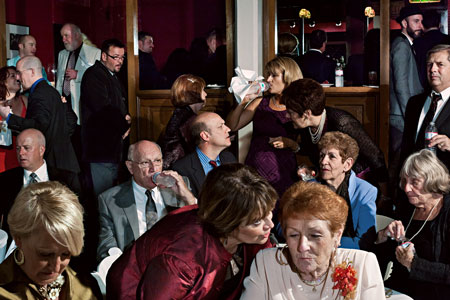 “Rosy’s Jazz Hall” © Bill McCullough
“Rosy’s Jazz Hall” © Bill McCullough
As Tracy Xavia Karner defined McCullough’s style in Spot magazine a few years ago, “McCullough has an instinct for the quirky side of social life. His images show the ‘other’ side of the wedding performance—terrified grooms, unsupervised children, bored guests, bridal fury—layered within the elaborately decorated ‘set’ of a church or reception hall. Weddings are the social drama in which most people play a starring role in at least once, and some times more, during their lives. We all know the shared script and have rehearsed our parts in this strange ritual. In McCullough’s images we can recognize ourselves in many of the roles and laugh at the bizarre drama of our social theatre.”
All Roads Lead to Photography
McCullough, now 50, began delving into photography at age 15, after being inspired by the Seventies television drama James at 16 (which featured a daydreaming teenage protagonist with an interest in photography). While in high school, McCullough shot with a 35mm camera and became obsessed with black-and-white photography. After saving enough money from a job as a waiter, he convinced his parents to let him build a darkroom in the garage, then set about teaching himself Ansel Adams’ famous “Zone System.”
At the time, photography, though a passion, was ultimately a hobby and when he went to college, McCullough found himself ignited by a new form of expression: music. He left behind photography and after graduation began working at his father’s software company while pursuing his love for music.
In his thirties, McCullough took up the pedal steel guitar and joined the honky tonk band Knife in the Water. As the band toured across the United States and Europe, they would often slink off to the nearest bar to drink and socialize before a night’s gig. Not being much of a drinker, McCullough took to wandering the streets or the bars with his camera, trying to find odd angles or compositions of people that intrigued him. The experience reignited his passion for photography and when the band wound down and he began to lose his hearing, McCullough looked to wedding photography as his new form of artistic expression. And it stuck. His work has been so well received over the years, in fact, that he’s had several exhibits, been featured on The New York Times’ Lens Blog and has a book of wedding images titled Technicolor Life.
Pleasant Surprises
When McCullough decided to start shooting weddings, he resolved to shoot in a way that allowed him to go after the “abstractions and open narratives” that he found shooting on the street and in the bars. He didn’t want to become hemmed in by trying to follow the typical wedding storytelling narrative.
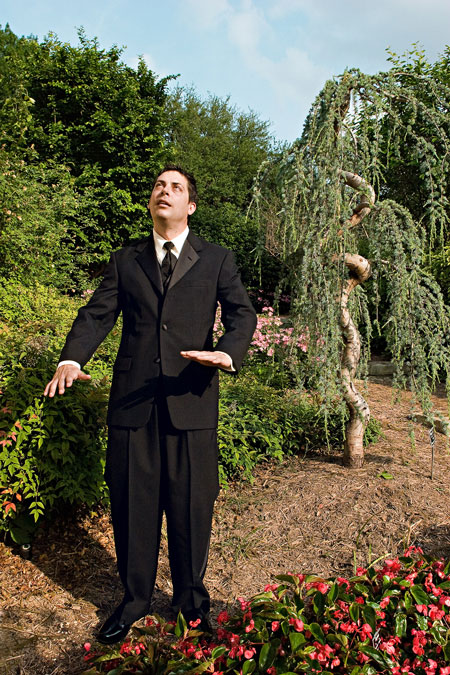 “Man with Black Suit in Garden” © Bill McCullough
“Man with Black Suit in Garden” © Bill McCullough
“To me, [a wedding] was just people in a space,” explains McCullough, “because they were invited or because they wanted to be there or they didn’t want to be there. And that’s it. I think not having those preconceived ideas of what a wedding should be, ended up being one of my greatest advantages.”
When McCullough began shooting weddings, he shot Tri-X and Kodachrome film exclusively on 35mm cameras. Perhaps that is why at the first wedding he ever shot, McCullough realized quickly that he had one chance to capture certain moments. While that might make some photographers nervous or scared, McCullough instead fed off the spontaneous energy.
 “Ceremony” © Bill McCullough
“Ceremony” © Bill McCullough
When he received the photos back from that first wedding, he immediately saw the style that he wanted to go after. Many of the photos transcended the obvious moments in a wedding—getting ready shots, the cutting of the cake, the exchanging of vows—and told an altogether different and honest story of moments. After that, McCullough’s style became defined by a desire to create photographs that were purely interesting or entertaining or mysterious.
Today, McCullough shoots digital on a Canon 5D Mark III with a 35mm prime lens that he uses “90 percent of the time.” However, the approach that he recognized at that first wedding has stuck.
“I’m not so worried about literal documentation because the underlying narrative is so strong,” says McCullough. Instead, McCullough seeks only to draw the viewer in enough to spark their interest about what the image is about. “The viewers have the ability to connect the dots,” explains McCullough.
Lighting Up A Scene
McCullough says he first started out using off-camera flash for technical reasons—to stop action in dark places and present photographs that were sharp and in focus. He quickly realized how integral lighting was to achieving his style. “I wanted a layering effect. I wanted to build depth of field,” explains McCullough. “I came up with a way of using off-camera flash to let objects in the foreground and the background have a voice and play off each other.”
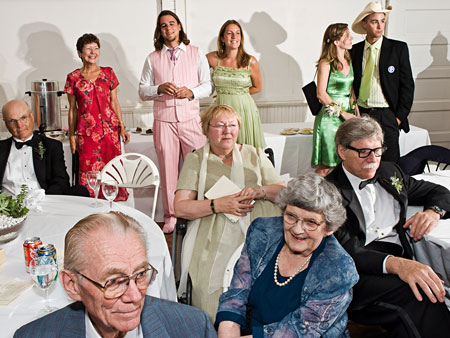 “Mercury Hall Folks” © Bill McCullough
“Mercury Hall Folks” © Bill McCullough
As digital cameras improved, his lighting style evolved. While he still frequently uses off-camera flash, he has recently become interested in shooting with only available light. The ability of pro cameras such as the Canon 5D Mark III to shoot at very high ISOs has allowed McCullough to change his approach. “You are not lighting someone for purely technical reasons,” says McCullough. “If you decide to light something, it’s because you are making some creative choices.”
A Photographic Performance
McCullough likens his shooting process to a “live performance” built up from improvisation and practice that he does every day he’s not shooting a wedding.
“[My clients] hire me to perform, to pay attention, to be sensitive…” says McCullough. “Through constant moving and floating and weaving, there are an infinite number of things that can be seen or photographed.”
To be able to perform at a high level, McCullough spends his downtime practicing “ideas.” Over the years, he says, he has come up with a number of terms that, with practice, he looks for instinctively during a wedding. For instance, the “Horizontal Stack” occurs when people, and/or objects, from both foreground to background, momentarily fall into a pattern such as a horizontal line or a triangle. This takes rhythm and timing to see. A “Shadow Frame,” he says, forms when the light strikes a subject, simultaneously illuminating it and creating a shadow that frames the subject. The “Match” occurs when an element in an image is repeated by a completely unrelated element. In his artist statement for “Technicolor Life,” McCullough explains, “This visual vocabulary provides the structure I need and frees me to improvise.”
eddings, according to McCullough, provide a constant source of interesting situations for him to photograph. They provide an open venue for him to be free to perform in. According to him, he hopes to create images that transcend their context as wedding images. To do that, says McCullough, “I try to let things happen as naturally possible.”
McCullough may not identify with the genre of wedding photography but even he must recognize the part weddings have played in his career.
“Weddings have dominated my professional portfolio but I decided to do it in an interesting way,” says McCullough. “I decided to make it my own.”

